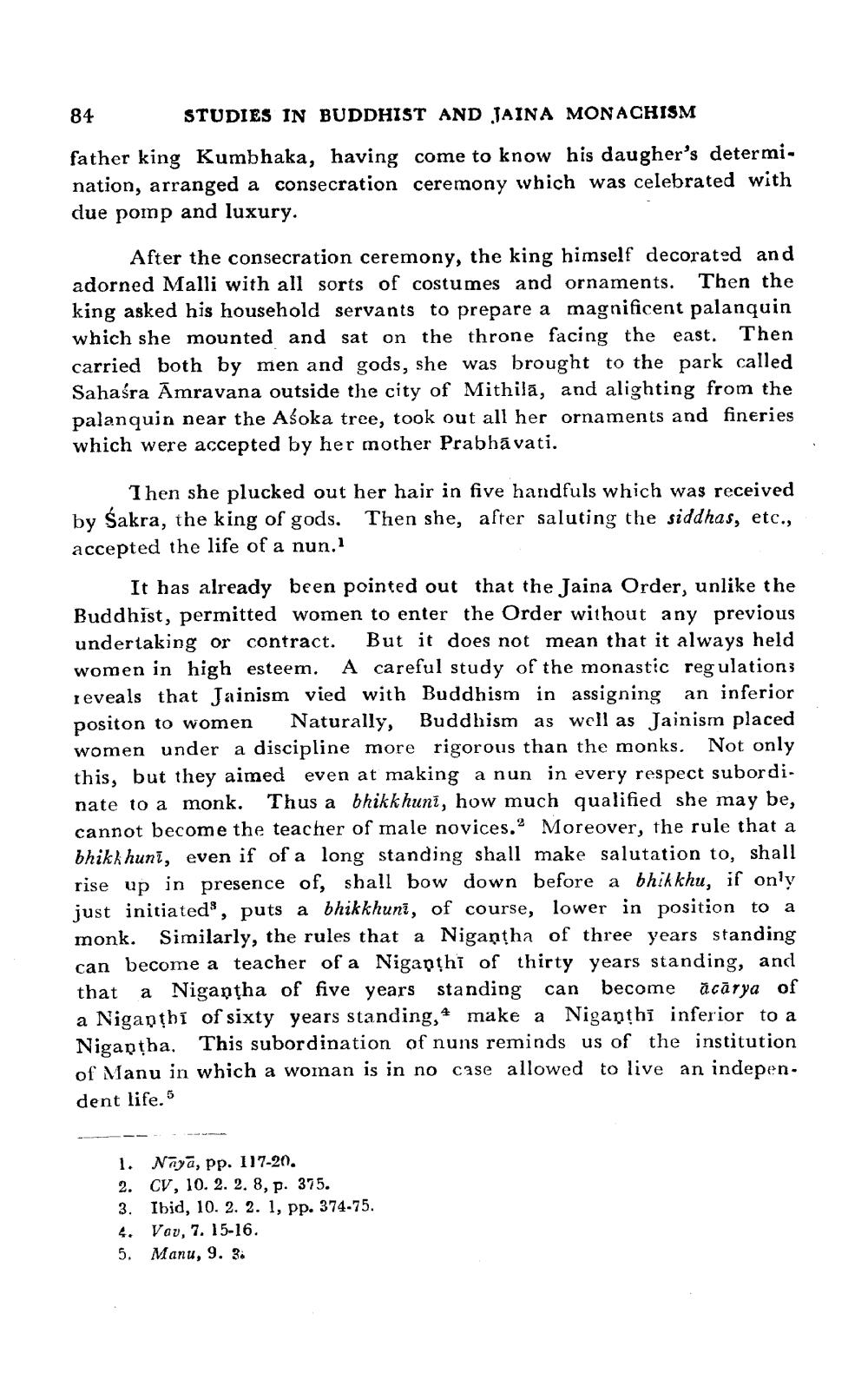________________
84
STUDIES IN BUDDHIST AND JAINA MONACHISM
father king Kumbhaka, having come to know his daugher's determination, arranged a consecration ceremony which was celebrated with due pomp and luxury.
After the consecration ceremony, the king himself decorated and adorned Malli with all sorts of costumes and ornaments. Then the king asked his household servants to prepare a magnificent palanquin which she mounted and sat on the throne facing the east. Then carried both by men and gods, she was brought to the park called Sahasra Amravana outside the city of Mithila, and alighting from the palanquin near the Aśoka tree, took out all her ornaments and fineries which were accepted by her mother Prabhāvati.
Then she plucked out her hair in five handfuls which was received by Sakra, the king of gods. Then she, after saluting the siddhas, etc., accepted the life of a nun.1
It has already been pointed out that the Jaina Order, unlike the Buddhist, permitted women to enter the Order without any previous undertaking or contract. But it does not mean that it always held women in high esteem. A careful study of the monastic regulations reveals that Jainism vied with Buddhism in assigning an inferior positon to women Naturally, Buddhism as well as Jainism placed women under a discipline more rigorous than the monks. Not only this, but they aimed even at making a nun in every respect subordinate to a monk. Thus a bhikkhuni, how much qualified she may be, cannot become the teacher of male novices. Moreover, the rule that a bhikkhunī, even if of a long standing shall make salutation to, rise up in presence of, shall bow down before a bhikkhu, if only just initiated, puts a bhikkhuni, of course, lower in position to a monk. Similarly, the rules that a Nigantha of three years standing can become a teacher of a Nigapthi of thirty years standing, and that a Nigaptha of five years standing can become acārya of a Niganthi of sixty years standing, 4 make a Niganthi inferior to a Nigaptha. This subordination of nuns reminds us of the institution of Manu in which a woman is in no case allowed to live an indepen. dent life. 5
1. Naya, pp. 117-20. 2. CV, 10. 2. 2. 8, p. 375. 3. Ibid, 10. 2. 2. 1, pp. 374-75. 4. Vav, 7. 15-16. 5. Manu, 9. 3.




